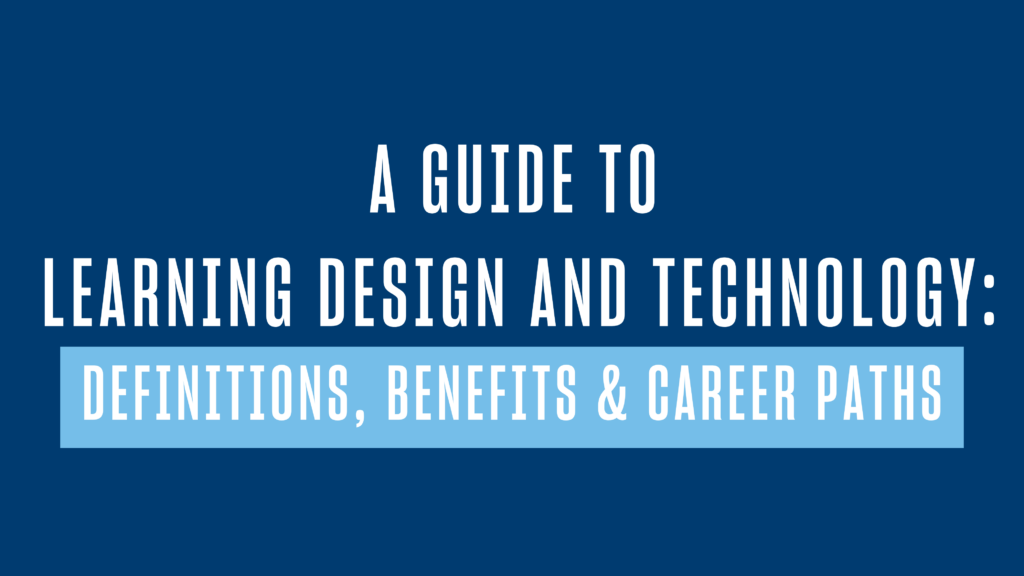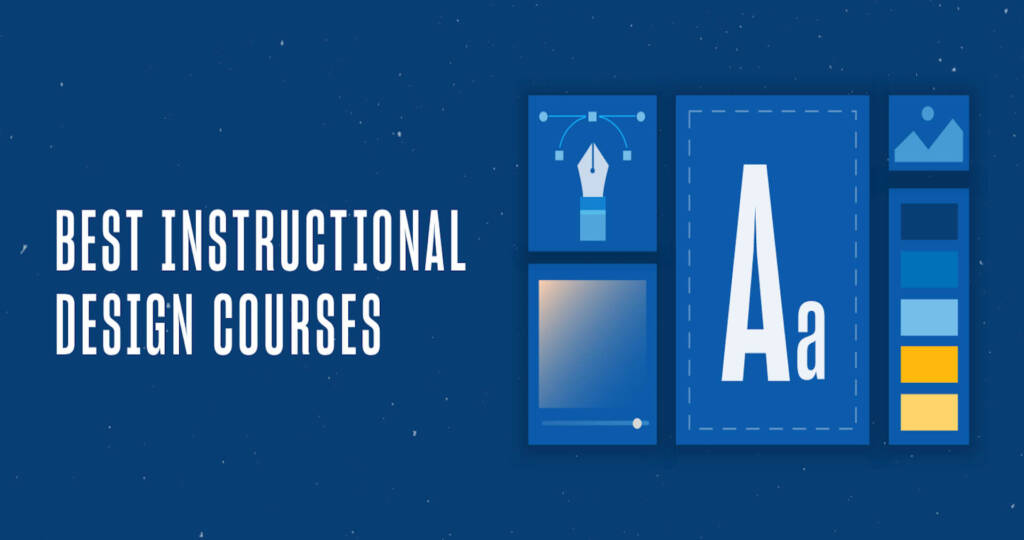Online platforms are now a standard choice for education and professional training. According to Forbes, online colleges and universities annually enroll over 2 million students — nearly 15% of all postsecondary learners. In 2021, roughly 60% of U.S. postsecondary degree seekers took online courses for part of their studies, with a third committing fully to digital classrooms.
But the pivot to online isn’t just in academia. Corporate training statistics show that 80% of organizations now conduct some of their compliance training online, with 29% transitioning entirely to digital. In sales training, 81% of organizations use online platforms. Similarly, for profession-specific trainings, such as desktop applications and IT systems, 73% of organizations also prefer online methods.
If your current or future job requires developing eLearning content, you should be familiar with the tools available to you. E-learning authoring tools enable educators to create personalized, engaging content and ensure compatibility with learning management systems (LMS) and other platforms. Among these tools, Adobe Captivate and Articulate Storyline 360 stand out for their capabilities and widespread use by today’s learning designers. Continue reading as we examine the capabilities and benefits of each.
What Is an eLearning Authoring Tool?
An eLearning authoring tool is a software application used to create multimedia educational content. These tools enable educators and instructional designers to integrate various media formats and interactive elements to create interactive and engaging eLearning experiences. The content created with these tools can be easily deployed across various platforms, including mobile devices, tablets and laptops.
Adobe Captivate and Articulate 360 are two popular examples of eLearning authoring tools. They are widely recognized in the industry and offer a range of features for creating self-paced learning experiences. Both tools allow users to:
- Develop and edit custom content: Users can create unique educational content and interactive learning materials, repurpose existing digital content and incorporate multimedia elements such as images, audio and video.
- Utilize templates and themes: Both tools offer a selection of eLearning themes and templates, which can expedite the course development process, particularly for users without coding or graphic design experience.
- Publish on various platforms: Users can publish and access content created with Captivate and Articulate 360 on different platforms, catering to the needs of modern learners who seek information anywhere, anytime.
[RELATED RESOURCE] Curious how instructional designers pick the right tools? Learn how platform mastery boosts career success.
What Is Adobe Captivate?
Adobe Captivate is a robust eLearning and mobile learning solution that enables developers to create content that’s responsive to various devices including desktops, laptops, tablets and mobile phones. The platform has its origins as a software demonstration and presentation tool, developed by Macromedia in the early 2000s. Adobe Systems later acquired Macromedia in 2005 and thus began the software’s evolution into an all-encompassing eLearning development tool.
Adobe Captivate is widely favored by educators and instructional designers due to its broad range of functionalities and features, which make it possible to create customized eLearning experiences.
In particular, Adobe Captivate stands out in the eLearning authoring tool market for its capabilities in developing responsive eLearning content. This means that the learning materials created with Captivate can automatically adjust according to the device and screen size on which they are viewed, fostering an accessible learning experience for all users.
Benefits of Adobe Captivate
Adobe Captivate offers a host of benefits for its users, including:
- Video creation: The platform comes with built-in video editing tools for trimming and enhancing clips. Moreover, it supports screen recording and software simulations, including VR scenarios, which are instrumental in creating engaging and interactive learning materials.
- Interactive content: Adobe Captivate offers a variety of features for creating interactive content. These include drag-and-drop, click-and-reveal, and hotspot interactions. Furthermore, it provides support for variables and advanced actions, facilitating the creation of complex interactions based on learner input.
- Responsive content creation: Adobe Captivate shines in the creation of responsive content. Its Fluid Boxes feature and breakpoint views allow for automatic content resizing and alignment, as well as the customization of content on different screen sizes.
- Advanced quizzing and assessment: The platform boasts a range of pre-built question types and customizable quiz templates, enhancing its quizzing and assessment capabilities. Integration with learning management systems (LMS) is also supported, enabling the tracking of learner progress and the generation of detailed reports.
- Accessibility: Adobe Captivate puts a strong emphasis on accessibility. The platform includes features such as closed captioning, keyboard navigation, screen reader support and alt text for images and objects. Additionally, it allows for the customization of font size and colors to improve readability for users with visual impairments. The platform is compliant with WCAG 2.1 and Section 508 of the Rehabilitation Act, making it a strong choice for creating accessible learning materials.
- Resource library: Adobe Captivate offers a library of over 75,000 assets, providing users with a wealth of resources for creating aesthetically pleasing and engaging eLearning content.
Drawbacks of Adobe Captivate
While Adobe Captivate provides many benefits and advanced features, it’s not without its shortcomings. Here are some of the potential drawbacks associated with using Adobe Captivate:
- Learning difficulty: Adobe Captivate’s complexity can be a double-edged sword. On one hand, it offers a wealth of tools and functionalities; on the other, its steep learning curve, particularly in comparison to other authoring tools, can be intimidating for beginners. Its interface can also seem overwhelming to those new to eLearning authoring tools and mastering the software might require significant time and practice.
- Developer requirement: Adobe Captivate’s sophisticated functionalities may necessitate the involvement of a developer for more complex projects. While this can lead to the creation of highly customized and advanced eLearning content, it can also increase the resources and time needed for a project, making it less suitable for rapid or low-budget developments.
- Limited templates and pre-built assets: Although Adobe Captivate offers a significant library of assets, the number of pre-built templates is somewhat limited. This can constrain the design process for users who rely heavily on templates for rapid eLearning content creation.
- Coding knowledge requirement: Advanced projects in Adobe Captivate may require coding or scripting knowledge. This can limit the scope of what can be achieved by those without a coding background and may necessitate additional training or support.
- Limited support and updates: Adobe’s support has been criticized for being limited, particularly in comparison to the support offered for its other products. Troubleshooting often relies on user forums and third-party resources rather than direct assistance from Adobe. Additionally, updates and improvements to the software can be less frequent compared to competitors, which might limit the platform’s responsiveness to emerging trends and technologies in eLearning.
What Is Articulate Storyline 360?
Articulate Storyline 360 is a powerful, user-friendly eLearning course authoring tool from the Articulate suite. This software provides a platform for educators to design and deliver interactive and engaging eLearning experiences. It’s also the preferred platform for the University of San Diego’ Master of Science in Learning Design and Technology.
Articulate has a long-standing history in the eLearning industry, being well-respected for its high-quality tools and strong customer base. The software focuses on user-friendly course creation, making it popular among a range of customers from different sectors.
One of the major attractions of Storyline 360 is its intuitive interface which is reminiscent of PowerPoint, making it easy to create slides and add content. This familiarity helps reduce the learning curve for new users. Additionally, the platform offers a wide range of pre-built templates and assets, which makes course creation quick and easy, especially for educators who might not have extensive design skills.
Benefits of Articulate Storyline 360
Articulate Storyline 360 offers numerous features and benefits to its users, such as:
- Dynamic course creation: The software provides enhanced tools for creating dynamic courses, including timeline-based editing for precise control over animations and media synchronization, and triggers and states for building interactivity and adaptive learning paths.
- PowerPoint integration: Storyline 360 offers seamless PowerPoint integration, allowing users to import and convert PowerPoint slides into Storyline projects. This provides a familiar interface and functionality for PowerPoint users, making the transition to Storyline much smoother.
- LMS integrations and analytics: The software can be integrated with various Learning Management Systems (LMS) and allows the publishing of content in various LMS-compliant formats, such as SCORM and xAPI. Additionally, it offers advanced reporting and analytics options, enabling educators to track and understand learner progress effectively.
- Extensive template and content library: Storyline 360 features a broad library of pre-built course templates and assets, facilitating rapid course development with minimal design effort.
- Accessibility features: The software comes equipped with a suite of accessibility features, such as closed captioning, keyboard navigation, screen reader support, alt text for images and objects and compliance with accessibility standards (WCAG 2.0 and Section 508 of the Rehabilitation Act). These features are generally easy to navigate and implement compared to Adobe Captivate.
- eLearning community: Storyline 360 users can join the E-Learning Heroes Community, an online professional learning community of new and experienced instructional and eLearning designers. The free membership includes access to multiple eBooks, resources, tutorials, troubleshooting support and weekly E-Learning Challenges that inspire and help build and maintain your eLearning skill set.
- Enhanced collaboration: Articulate Storyline 360 integrates with Review 360, an intuitive web app that enables collaboration among e-learning developers and stakeholders. This feature allows for streamlined content reviews, gathering and tracking feedback, engaging in threaded discussions, resolving comments and maintaining version history.
- Video editing and screen recording: Storyline 360 boasts strong video editing features and screen recording capabilities. Users can easily create screen capture videos or detailed software simulations. The platform enables screen recording and offers flexibility in choosing the output format without the need for re-recording, saving time and effort.
Drawbacks of Articulate Storyline 360
Despite the many benefits of Articulate Storyline 360, there are a few areas where it may fall short:
- Interface: While the interface is designed to be user-friendly, some users may find the organization of tools and options in the dense menu system to be overwhelming. Locating specific features and functions can sometimes be difficult.
- OS compatibility: Although the software is native to the Windows operating system, it can be used on a Mac with an additional software installation. This might pose some limitations or additional steps for Mac users. However, the courses developed can be viewed seamlessly on iPads and iPhones.
[FREE GUIDE] Want to master industry-leading tools? See how instructional design can help you create engaging content.
Storyline vs. Captivate: Which Is Right for Me?
Choosing between Adobe Captivate and Articulate Storyline 360 depends largely on your individual needs, skill set, budget and specific learning design requirements. Both tools have their unique strengths and potential drawbacks.
Adobe Captivate is renowned for its robust feature set and customization options. It offers strong video editing tools, supports complex interactions and is geared toward creating responsive content across various devices. However, it has a learning curve and may require a developer for more complex projects. Support from Adobe can also be limited.
On the other hand, Articulate Storyline 360 is user-friendly with a familiar interface, making it a good fit for beginners or those with limited or no coding experience. However, its collaboration tools are limited, and it has less extensive video editing capabilities than Captivate.
Deciding Factors
When choosing an eLearning authoring tool, you should consider factors, such as:
- Budget: Adobe Captivate offers a perpetual license option, while Articulate 360 is based on a subscription model. The University of San Diego, however, provides a one-time, discounted tech fee of $280 for all first-semester students to access an Articulate360 account, making it more affordable for those students.
- Existing skill set: Captivate is suited for advanced users or those requiring more customization, while Storyline 360 is more suitable for beginners or those wanting a more streamlined experience.
- Learning design needs: Your specific learning design needs may dictate your choice. If high-quality video editing and responsive design are important, Captivate might be the right fit. If you prefer a user-friendly interface and rapid course development, Storyline 360 could be your go-to tool.
- Compatibility with existing workflows and tools: If your current workflows heavily involve PowerPoint, then Storyline 360’s seamless PowerPoint integration might be beneficial. Conversely, if you’re dealing with advanced interactive content or creating software simulations, Captivate’s robust feature set might be more appropriate.
- Tech Support: Storyline 360 offers superior tech support through its Review 360 platform, enabling efficient feedback management and problem resolution. In contrast, Adobe Captivate is noted for less responsive support, which could be a significant consideration for users prioritizing dependable and quick assistance.
Before making a decision, we highly recommend that you test both tools via their trial versions. Adobe Captivate and Articulate offer free trials or demo versions of their software. This will give you a hands-on feel for each tool and help you understand which one aligns with your needs. Additionally, consider participating in training sessions or webinars to further explore each tool’s capabilities. Your ideal tool will depend largely on your specific use-case scenario, budget and personal preference.
Make an Informed Decision for eLearning Success
In the broad context of instructional design, choosing the appropriate eLearning authoring tool is just one piece of the puzzle. Comprehensive instructional design incorporates various aspects, from understanding learner needs and setting learning objectives to delivering content effectively and assessing learning outcomes. The choice of authoring tool plays a critical role in this process.
As part of the University of San Diego Master of Science in Learning Design and Technology (MS-LDT) program, you’ll gain hands-on experience with many different learning design tools, as well as a deep understanding of effective instructional design principles. Your journey to mastering the art of eLearning starts here.



![What is Learning Experience Design? [+ Career Paths]](https://onlinedegrees.sandiego.edu/wp-content/uploads/2023/06/ldt_blog_learningexperiencedesign-1024x576.png)
